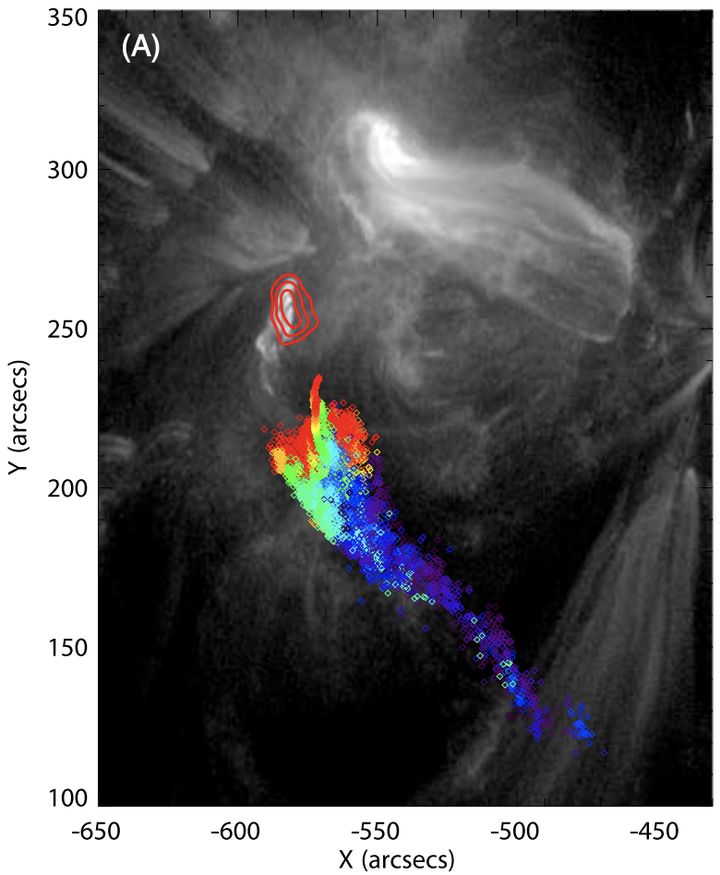Tracing Electron Beams in the Sun's Corona with Radio Dynamic Imaging Spectroscopy

Abstract
We report observations of type III radio bursts at decimeter wavelengths (type IIIdm bursts)—signatures of suprathermal electron beams propagating in the low corona—using the new technique of radio dynamic imaging spectroscopy provided by the recently upgraded Karl G. Jansky Very Large Array. For the first time, type IIIdm bursts were imaged with high time and frequency resolution over a broad frequency band, allowing electron beam trajectories in the corona to be deduced. Together with simultaneous hard X-ray and extreme ultraviolet observations, we show that these beams emanate from an energy release site located in the low corona at a height below åisebox-0.5ex~15 Mm, and propagate along a bundle of discrete magnetic loops upward into the corona. Our observations enable direct measurements of the plasma density along the magnetic loops, and allow us to constrain the diameter of these loops to be less than 100 km. These overdense and ultra-thin loops reveal the fundamentally fibrous structure of the Sun’s corona. The impulsive nature of the electron beams, their accessibility to different magnetic field lines, and the detailed structure of the magnetic release site revealed by the radio observations indicate that the localized energy release is highly fragmentary in time and space, supporting a bursty reconnection model that involves secondary magnetic structures for magnetic energy release and particle acceleration.